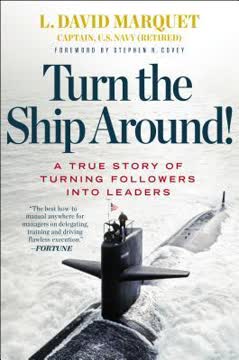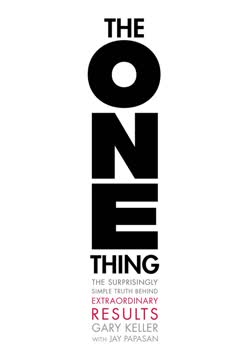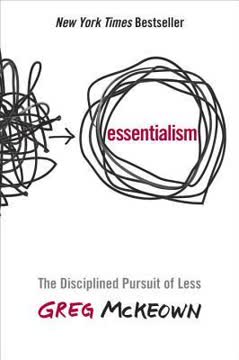Key Takeaways
1. Proposals are summations, not explanations
A proposal is a summation, not an explanation. It is a summary of the conceptual agreement you've reached with an economic buyer and not a negotiating document or an attempt to make a sale.
Concise and focused. Proposals should be brief, typically 2.5 pages, summarizing previously agreed-upon points with the buyer. They are not meant to educate or persuade, but to formalize discussions. Avoid including unnecessary details like resumes, promotional materials, or extensive charts and graphs. Instead, focus on:
- Situation appraisal
- Objectives
- Metrics for success
- Value to the client
- Methodology and options
- Timing
- Joint accountabilities
- Terms and conditions
- Acceptance
By keeping proposals concise and focused, you demonstrate respect for the buyer's time and reinforce the agreements already made during previous discussions.
2. Establish a trusting relationship with the economic buyer
You want to avoid those people who can say no but can't say yes—the gatekeepers.
Identify the decision-maker. The economic buyer is the person who can write a check without further approvals. To establish a trusting relationship:
- Focus on building rapport during initial meetings
- Share personal and non-public information
- Ask for and offer advice
- Challenge each other's assumptions
- Avoid interruptions during meetings
Indicators of a trusting relationship:
- Buyer shares confidential information
- Buyer seeks your advice on various matters
- You feel comfortable pushing back on ideas
- Buyer prioritizes time with you
By cultivating trust with the economic buyer, you increase the likelihood of proposal acceptance and long-term business relationships.
3. Gain conceptual agreement before writing the proposal
Conceptual agreement is concurrence in theory about what will take place. Once you create this with a true buyer, the proposal will merely support and substantiate that agreement.
Align on key elements. Before drafting a proposal, ensure you and the buyer agree on:
- Objectives: Business outcomes to be achieved
- Metrics: Indicators of progress and success
- Value: Impact of meeting objectives on the organization and buyer
This agreement forms the foundation of your proposal and increases the chances of acceptance. To gain conceptual agreement:
- Ask probing questions about desired outcomes
- Discuss how success will be measured
- Explore the value of achieving objectives
- Address potential obstacles or concerns
By establishing conceptual agreement, you create a shared vision for the project and build a strong case for your proposed solution.
4. Create value-based proposals with clear objectives and metrics
The client is best served (remember about "improving the client's condition") by a fast improvement or resolution, not a slow one.
Focus on outcomes. Value-based proposals emphasize the results and impact of your work, not the time spent or materials used. Key components include:
- Objectives: Clearly state the business outcomes to be achieved
- Metrics: Define specific, observable indicators of progress and success
- Value: Articulate the tangible and intangible benefits of meeting objectives
Example:
- Objective: Increase market share by 15% within 12 months
- Metric: Monthly sales reports showing market share growth
- Value: $10 million in additional revenue, improved brand recognition
By structuring proposals around value, you justify higher fees and demonstrate a clear return on investment for the client.
5. Offer multiple options to increase chances of acceptance
Options escalate business dramatically.
Provide choices. Offering multiple options in your proposal changes the buyer's decision from "Should I do this?" to "How should I do this?" This approach:
- Increases acceptance rates
- Allows for higher fees
- Demonstrates additional value
Typical option structure:
- Option 1 (lowest price): Meets all project objectives
- Option 2 (middle price): Adds extra value beyond basic objectives
- Option 3 (highest price): Offers maximum value and comprehensive solutions
By presenting options, you give the buyer flexibility while increasing the likelihood of securing higher-value engagements.
6. Avoid gatekeepers and intermediaries
You cannot succeed in this business by catering to and dealing with low-level people unless it's to work with them to quickly introduce you to legitimate economic buyers.
Direct access is crucial. Gatekeepers and intermediaries often lack the authority to make decisions and may hinder your progress. To bypass them:
- Clearly communicate your need to speak with the economic buyer
- Explain the ethical obligation to discuss expectations with the decision-maker
- Offer to include the gatekeeper in meetings with the buyer
If necessary, use "explosives" to circumvent stubborn gatekeepers:
- Pursue the buyer directly through other channels
- Mention previous discussions with the gatekeeper
- Emphasize the importance of speaking with the decision-maker
By focusing on economic buyers, you increase your chances of securing valuable projects and building long-term client relationships.
7. Submit proposals quickly and follow up assertively
Speed is of the essence. Too many bad things can happen the longer you wait to submit your proposal.
Act with urgency. Submit proposals within 24 hours of gaining conceptual agreement. This approach:
- Capitalizes on the buyer's excitement and momentum
- Reduces the risk of competing priorities or unexpected events
- Demonstrates your responsiveness and professionalism
Follow-up best practices:
- Set a specific date and time for follow-up during the initial meeting
- Call as promised, even if you reach voicemail
- Use assumptive language: "Which option have you decided to implement?"
- If no response after three attempts, send a polite letter
By moving quickly and following up assertively, you maintain momentum and increase the likelihood of proposal acceptance.
8. Handle objections and rejections professionally
You win some, you lose some, and some get rained out. But you have to suit up for them all.
Learn and improve. When faced with objections or rejections:
- Don't take it personally
- Seek feedback to understand the reasons
- Ask for future consideration and referrals
- Use the experience to refine your approach
Common objections and strategies:
- Lack of budget: Explore reallocation of existing resources
- Timing issues: Emphasize the urgency and value of immediate action
- No perceived need: Create or uncover needs through probing questions
By handling objections and rejections professionally, you maintain relationships and position yourself for future opportunities.
9. Utilize retainers for long-term client relationships
Retainers are "insurance policies" in some respects. They constitute a safety valve, or sounding board, or contingency for the client.
Offer ongoing value. Retainers provide clients with access to your expertise on an as-needed basis. Key considerations:
- Who: Specify the number and level of people with access
- How: Define the scope of interactions (e.g., phone, email, in-person)
- When: Establish the duration of the arrangement (minimum 90 days recommended)
Benefits of retainers:
- Steady income stream
- Lower labor intensity
- Opportunity for deeper client relationships
By offering retainer arrangements, you create long-term partnerships and secure consistent revenue.
10. Continuously improve your proposal skills and increase fees
As your proposals create high rates of acceptance, start to experiment with your approaches.
Refine and optimize. Regularly assess your proposal process and outcomes to identify areas for improvement:
- Analyze which options are most frequently selected
- Evaluate the effectiveness of your value statements
- Experiment with different fee structures and discounts
- Seek feedback from clients on your proposal format and content
As your success rate increases:
- Gradually raise your fees
- Offer more comprehensive solutions
- Explore new markets or industries
By continuously improving your proposal skills and increasing fees, you maximize your earning potential and deliver greater value to clients.
Last updated:
FAQ
What's "Million Dollar Consulting Proposals" by Alan Weiss about?
- Purpose of the Book: "Million Dollar Consulting Proposals" is a guide on how to write consulting proposals that are accepted consistently. It focuses on creating proposals that are concise, effective, and value-driven.
- Target Audience: The book is aimed at consultants and business professionals who need to craft proposals that lead to successful business engagements.
- Core Concept: The book emphasizes the importance of proposals as summations of prior agreements rather than exploratory documents, ensuring they are aligned with the client's needs and expectations.
Why should I read "Million Dollar Consulting Proposals"?
- Improve Proposal Success Rate: The book provides strategies to increase the acceptance rate of your proposals to 80% or higher.
- Value-Based Approach: It teaches how to focus on value rather than time and materials, which can lead to higher fees and better client relationships.
- Practical Guidance: Alan Weiss offers practical advice and real-world examples that can be directly applied to your consulting practice.
What are the key takeaways of "Million Dollar Consulting Proposals"?
- Conceptual Agreement: Proposals should be based on a prior conceptual agreement with the client, focusing on objectives, metrics, and value.
- Options and Value: Always provide options in your proposals to shift the client's decision from "Should I do this?" to "How should I do this?"
- Avoid Legal Pitfalls: Keep proposals free of legal jargon to avoid unnecessary delays and complications with legal departments.
How does Alan Weiss define a successful proposal in "Million Dollar Consulting Proposals"?
- Summation, Not Exploration: A successful proposal is a summation of what has already been agreed upon with the client, not a document for negotiation.
- Clear Objectives and Metrics: It clearly outlines the objectives, metrics for success, and the value to the client.
- Client-Centric: It is tailored to the client's specific needs and includes options that provide varying levels of value.
What is the role of "conceptual agreement" in "Million Dollar Consulting Proposals"?
- Foundation of Proposals: Conceptual agreement is the foundation upon which successful proposals are built, ensuring alignment with the client's expectations.
- Three Key Elements: It involves agreement on objectives, metrics, and value, which are crucial for the proposal's acceptance.
- Trust and Relationship: Achieving conceptual agreement requires a trusting relationship with the client, which is essential for proposal success.
How does Alan Weiss suggest handling legal departments in "Million Dollar Consulting Proposals"?
- Avoid Legalese: Keep proposals free of legal jargon to prevent them from being bogged down in legal reviews.
- Direct Communication: If legal involvement is unavoidable, communicate directly with the legal department to understand their concerns and address them proactively.
- Focus on Value: Emphasize the value and ROI in the proposal to shift focus away from legal technicalities.
What are the "Nine Key Components" of a successful proposal according to "Million Dollar Consulting Proposals"?
- Situation Appraisal: A brief description of why the project is necessary.
- Objectives: Clear, outcome-based goals for the project.
- Metrics: Measures of success that will indicate progress and completion.
- Value: The impact and ROI for the client.
- Methodology and Options: Different approaches to achieve the objectives, providing the client with choices.
- Timing: Estimated duration and schedule for the project.
- Joint Accountabilities: Responsibilities of both the consultant and the client.
- Terms and Conditions: Fees, payment terms, and other financial details.
- Acceptance: A section for the client to formally agree to the proposal.
How does Alan Weiss recommend dealing with "gatekeepers" in "Million Dollar Consulting Proposals"?
- Respect but Distance: Treat gatekeepers with respect but maintain a professional distance to avoid being seen as a peer.
- Mutual Self-Interest: Work with gatekeepers to create a mutually beneficial situation that leads to the economic buyer.
- Direct Approach: If necessary, use guile to bypass gatekeepers and reach the decision-maker directly.
What is the significance of "value-based fees" in "Million Dollar Consulting Proposals"?
- Focus on Value: Fees should be based on the value provided to the client, not on time or materials.
- Client ROI: Emphasize the return on investment for the client, which justifies higher fees.
- Avoid Commodity Pricing: By focusing on value, consultants can avoid being compared to competitors on price alone.
What strategies does Alan Weiss suggest for following up on proposals in "Million Dollar Consulting Proposals"?
- Definitive Next Steps: Set clear follow-up dates and times with the client before leaving the initial meeting.
- Prompt Follow-Up: Contact the client within 24 hours of proposal receipt to maintain momentum.
- Assumptive Closing: Use assumptive language when following up, such as asking which option the client has chosen.
How can consultants use "Million Dollar Consulting Proposals" to handle last-minute objections?
- Identify the Objection Type: Determine if the objection is due to misunderstandings, intervening events, resistance from others, or illegitimate fears.
- Address Misunderstandings: Clarify any misunderstandings and offer compromises if necessary.
- Reinforce Value: Remind the client of the value and ROI of the project to overcome resistance or fears.
What are the best quotes from "Million Dollar Consulting Proposals" and what do they mean?
- "Proposals are not the point of the arrow, they are the heft behind the arrow." This means that proposals should support and reinforce the relationship and agreements already made with the client.
- "Wealth is discretionary time." This emphasizes the importance of maximizing time efficiency and focusing on high-value activities.
- "If you’re pricing by time and materials and intend to continue doing that, you don’t need this book." This highlights the book's focus on value-based pricing rather than traditional time-based billing.
Review Summary
Million Dollar Consulting Proposals receives generally positive reviews, with readers praising its concise, practical advice on writing effective consulting proposals. Many appreciate the author's emphasis on value-based fees and conceptual agreements. Reviewers find the book helpful for solo practitioners and freelancers, particularly in North America and Western Europe. Some criticize the author's tone as cold or repetitive, and a few note that the content may not apply to all industries. Overall, readers value the book's concrete examples, templates, and guidance on proposal structure and client relationships.
Similar Books










Download PDF
Download EPUB
.epub digital book format is ideal for reading ebooks on phones, tablets, and e-readers.








